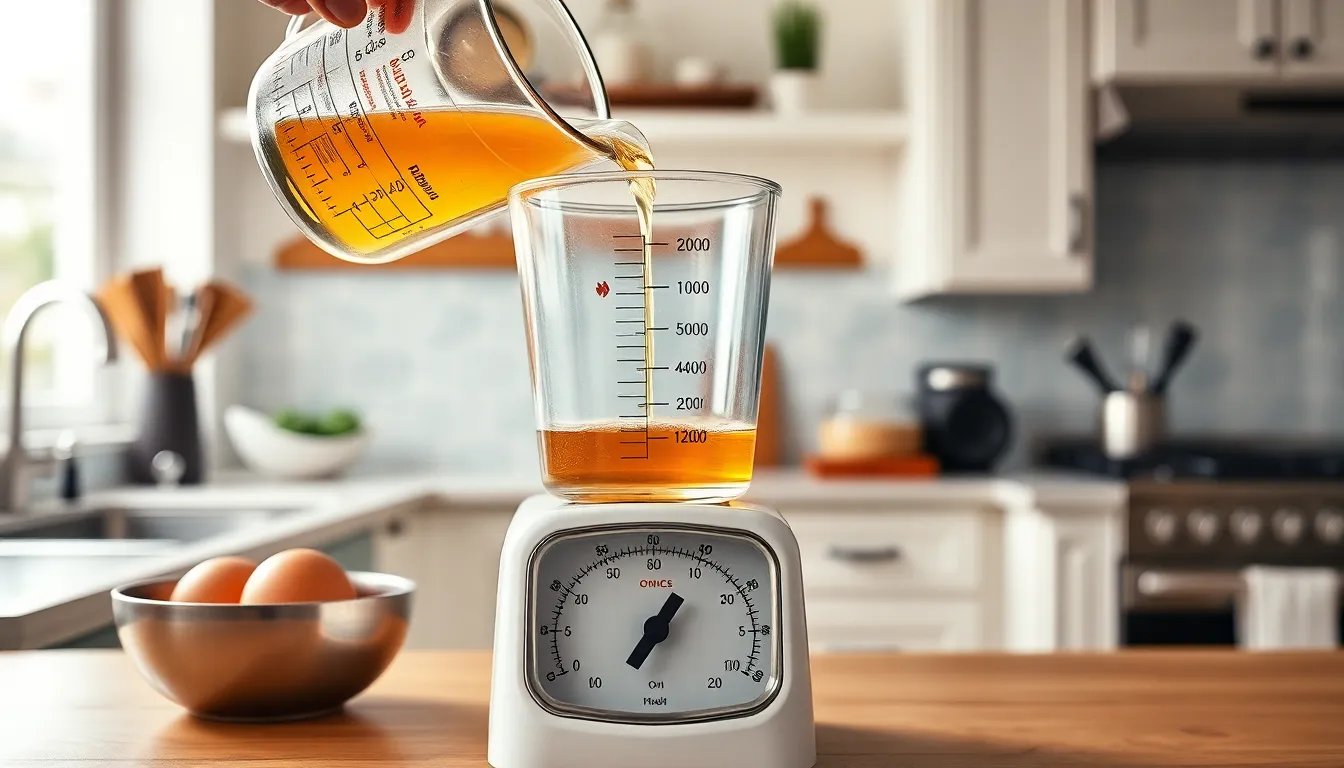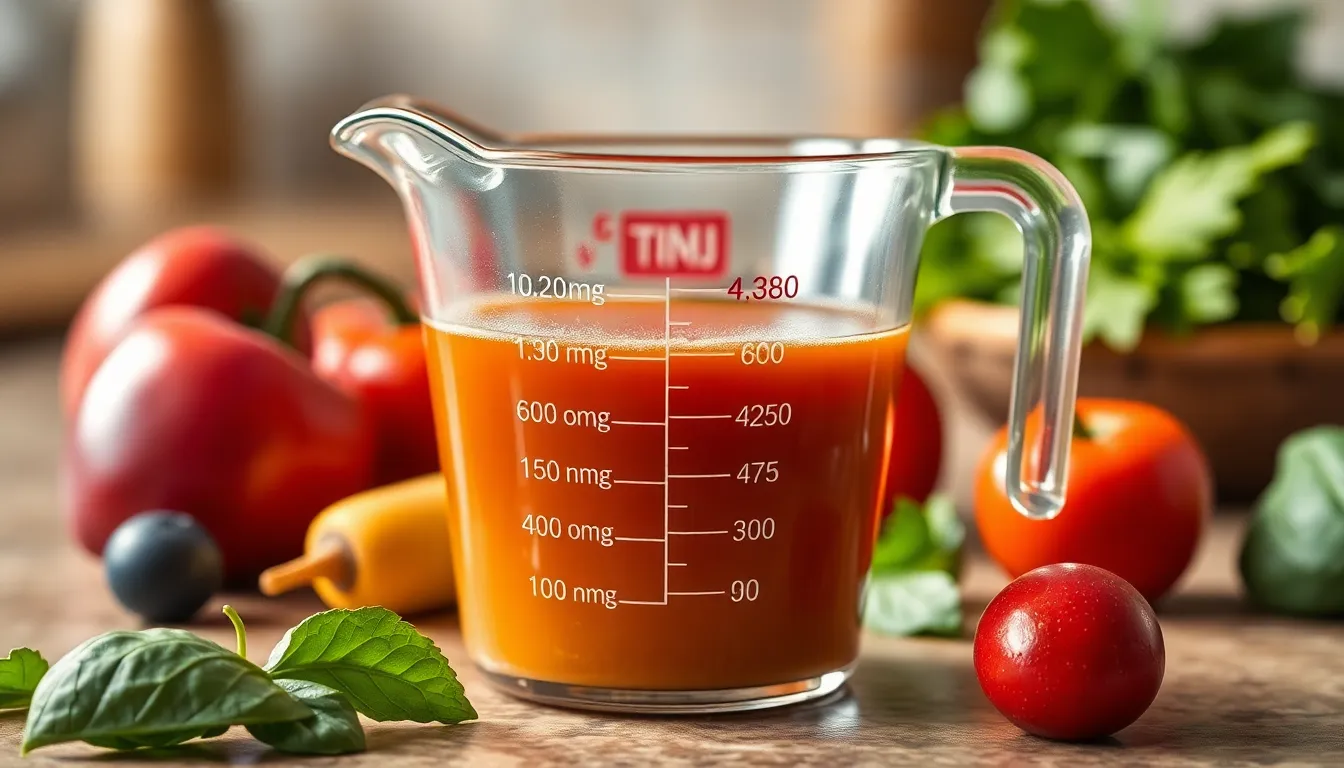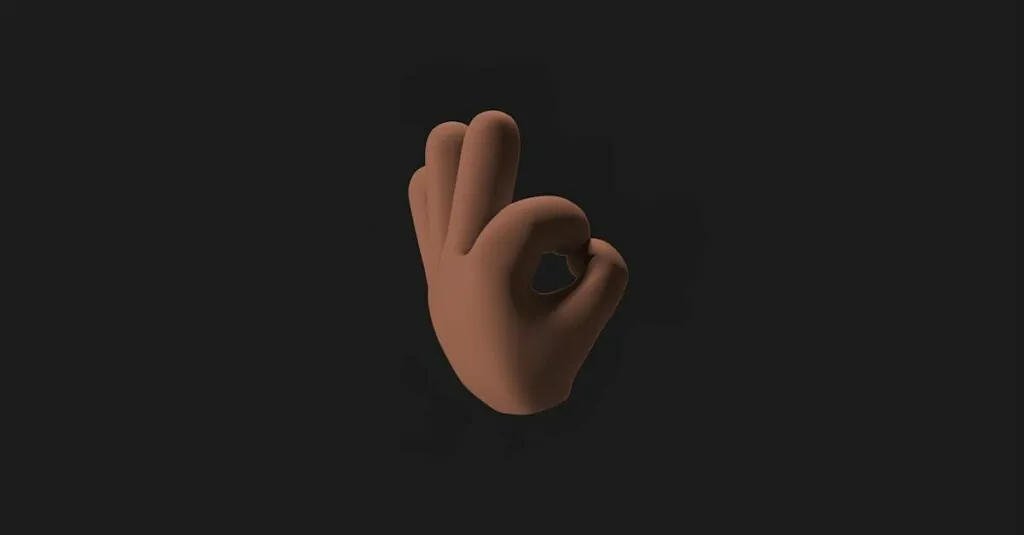When it comes to measuring liquids, confusion often reigns supreme. One moment you’re confidently pouring your favorite drink, and the next, you’re left scratching your head over how many milliliters are in an ounce. Spoiler alert: it’s not as complicated as it sounds, but it might just be the most important conversion you never knew you needed.
Table of Contents
ToggleUnderstanding Ounces and Milliliters
Understanding the differences between ounces and milliliters aids in accurate conversions for liquid measurements. This knowledge proves beneficial in cooking, baking, and scientific applications.
What Is an Ounce?
An ounce represents a unit of volume in the United States customary and British imperial systems. In the U.S., one fluid ounce equals approximately 29.57 milliliters. It is commonly used in culinary contexts, such as measuring liquids like water, oil, or sauces. Also, food and beverage containers often display measurements in ounces, making familiarity with this unit essential for consumers.
What Is a Milliliter?
A milliliter serves as a metric unit of volume in the metric system. One milliliter is defined as one-thousandth of a liter. This measurement is frequently utilized in scientific and medical fields for precise dosing of liquids. Many liquid products, such as medicines, are labeled in milliliters, highlighting the importance of understanding this unit for proper usage.
Exact Conversion Between Ounces and Milliliters


Understanding the exact conversion between ounces and milliliters simplifies many tasks. One fluid ounce equals approximately 29.57 milliliters. This standardized conversion rate helps ensure consistency across various measurements.
Standard Conversion Rate
The standard conversion rate between ounces and milliliters remains 1 ounce to 29.57 milliliters. Many recipes reflect this conversion, as culinary practices often require precise liquid measurements. When measuring larger quantities, such as in gallons, knowing that 1 gallon equates to about 3785.41 milliliters can also prove helpful. Chefs often round the conversion for ease, using 30 milliliters per ounce in specific contexts for quick calculations. Maintaining this conversion accuracy prevents discrepancies in ingredient proportions.
When to Use Different Measurements
Different measurements serve distinct purposes based on the context. Ounces are typically used in the United States for cooking and beverages, providing familiarity for many cooks. Milliliters shine in scientific fields and global contexts, where metric systems dominate. In recipes, choosing ounces simplifies instructions for U.S. audiences, while international cooks may prefer milliliters for accuracy. For health and medicine, milliliters often provide more precise dosages. Thus, selecting the appropriate measurement aligns with the specific application, ensuring clarity and consistency.
Practical Applications of Ounce to Milliliter Conversion
Ounce to milliliter conversion serves essential functions in everyday scenarios. Understanding this conversion facilitates accuracy in various applications.
Cooking and Baking
Culinary professionals rely on precise measurements to achieve the desired flavor and texture. Recipes in the U.S. often use ounces to specify liquid ingredients. One fluid ounce equals about 29.57 milliliters, which offers a standardized approach for consistent results. Ingredients in larger quantities, such as sauces and dressings, also benefit from this conversion. Chefs may round the conversion to 30 milliliters per ounce, but accuracy remains vital for ingredient balance. Utilizing exact conversions helps maintain the integrity of recipes and enhances overall dish outcomes.
Medical Dosages
Accuracy in medical dosing relies heavily on precise measurements. Healthcare professionals use milliliters for liquid medications to ensure correct dosages. One fluid ounce translates to approximately 29.57 milliliters, aiding in simplifying conversions from prescription labels. Patients benefit from understanding these measurements, as they can self-administer medications safely. When patients comprehend conversions, they minimize risks associated with incorrect dosages. Knowledge of ounce to milliliter conversions proves essential in both medical environments and everyday health management.
Tools for Conversion
Various tools assist in converting ounces to milliliters effectively. These tools enhance precision and streamline the measuring process.
Conversion Charts
Conversion charts provide a quick reference for liquid measurement. These charts typically display the conversion rate, showing that one fluid ounce equals approximately 29.57 milliliters. Many users prefer printed charts for kitchens since they allow easy access while cooking. Larger quantities can also be included in these charts, offering conversions for gallons and liters. With well-organized charts, cooks and professionals can avoid calculation errors and ensure ingredient accuracy.
Online Calculators
Online calculators simplify the conversion process further. Users can input specific values, generating instant results for ounce to milliliter conversions. Various websites and apps offer this functionality, allowing access on computers and smartphones. Many calculators also allow batch conversions, saving time for users who manage multiple measurements. Rapid calculations enable chefs and medical professionals to maintain accuracy while preparing recipes or dosing medications.





